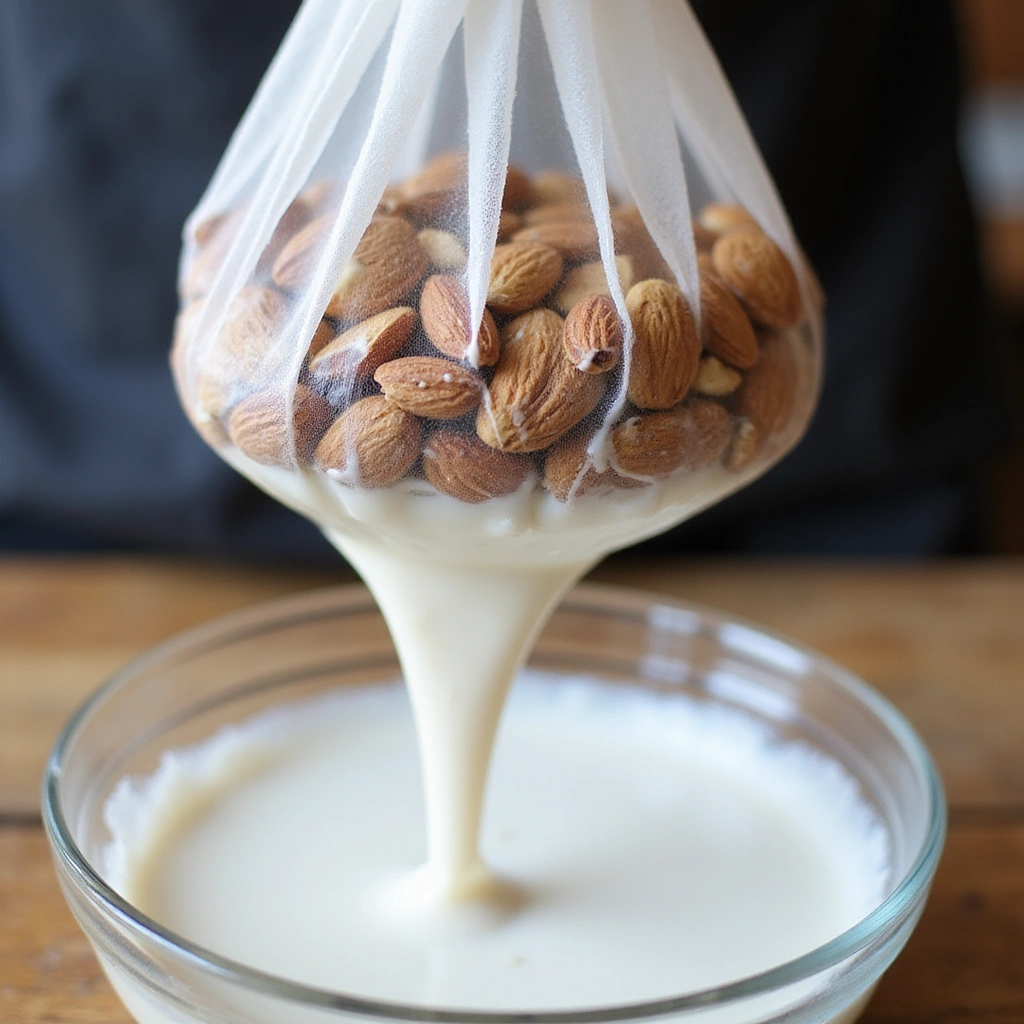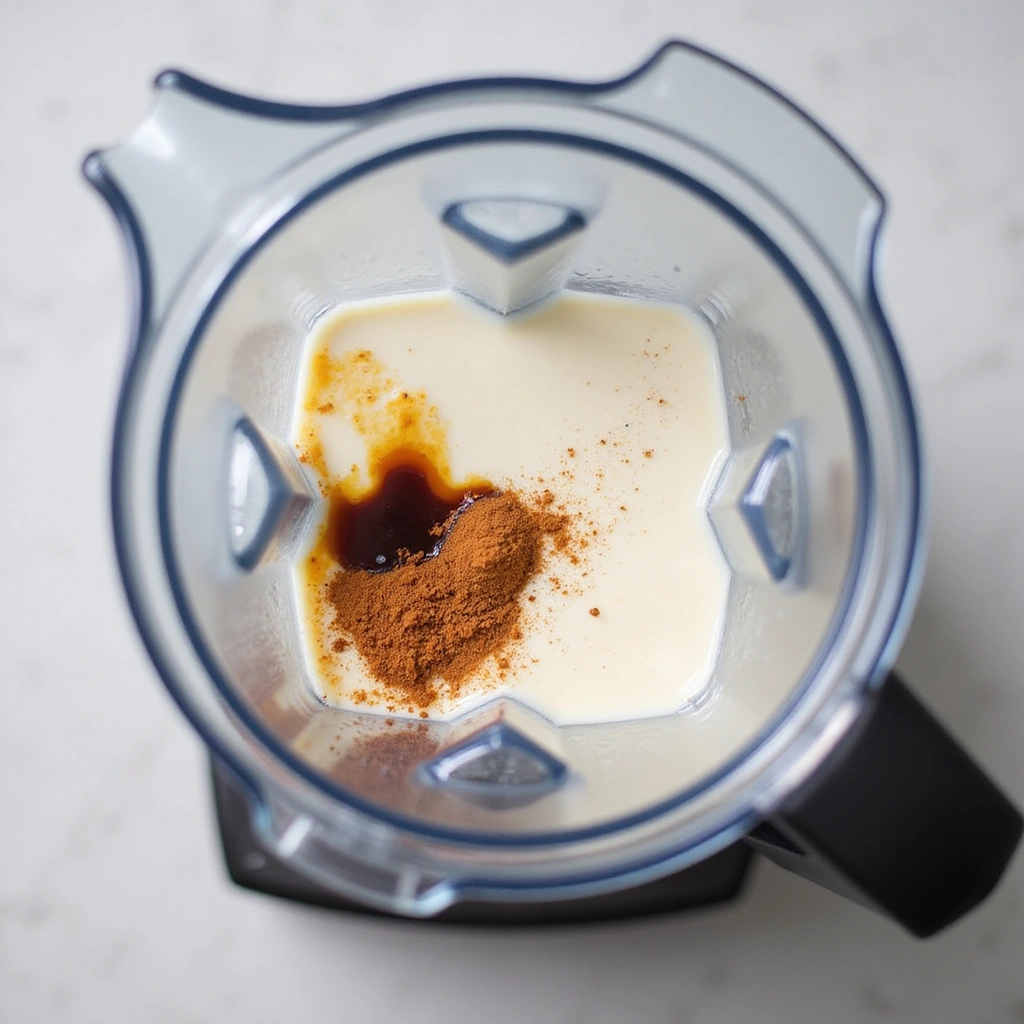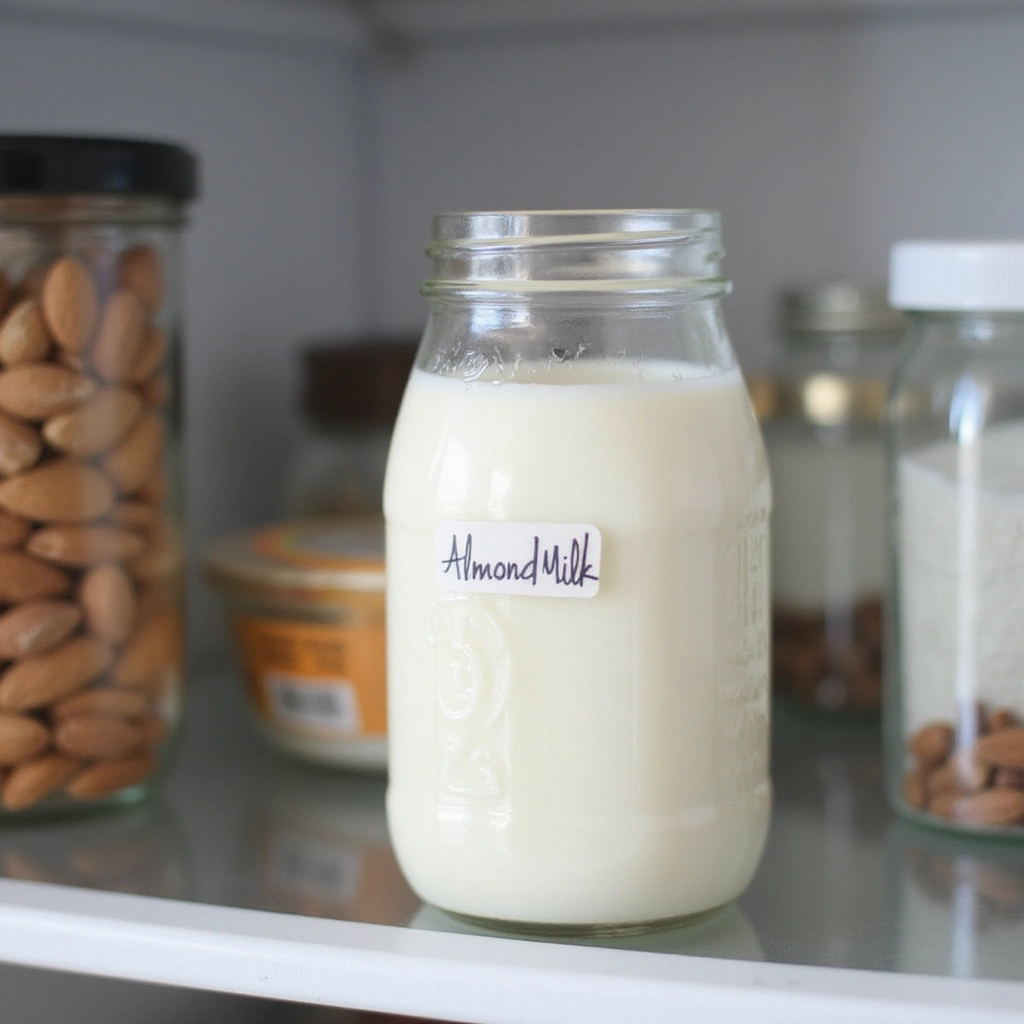Almond milk coffee creamer is a delightful way to elevate your morning brew with a creamy, nutty flavor that pairs beautifully with coffee.
As a dairy-free alternative, it caters to those looking for healthier options without sacrificing taste.
The smooth texture and subtle sweetness make it a perfect companion for any coffee enthusiast, whether you’re starting your day or enjoying a cozy afternoon treat.
With a few simple ingredients, you can create your own homemade almond milk coffee creamer that not only tastes great but is also packed with nutritious benefits.
The History and Cultural Significance
• Almond Milk Coffee Creamer Recipes Dairy Free And Healthy traces its origins to ancient Middle Eastern cultures, where almond milk was first created by grinding almonds with water.
• The dish evolved over decades as people sought dairy alternatives, particularly during health movements in the 20th century, leading to the modern versions we enjoy today.
• In various cultures, dairy-free creamers like almond milk are increasingly popular, symbolizing a shift towards plant-based diets and healthier living.
• While many variations exist, the authentic version maintains the creamy texture and natural sweetness of the almonds that set it apart from imitations.
Recipe Overview
Nutritional Information (per serving)
Ingredients
Essential Equipment Guide
Blender: A high-speed blender is essential for creating a smooth and creamy almond milk. Look for one with a strong motor to ensure the almonds are finely ground and well-blended.
Nut Milk Bag or Fine Mesh Strainer: This tool is crucial for straining the almond milk to remove any pulp, resulting in a silky texture. If you don’t have a nut milk bag, a fine mesh strainer will work as an alternative.
Measuring Cups: Accurate measurements are important for achieving the right consistency and flavor balance. Use dry measuring cups for solids and liquid measuring cups for liquids to ensure precision.
Preparation Methods
Soaking Almonds: Soaking almonds overnight softens them, making them easier to blend and resulting in a creamier almond milk. Aim for at least 8 hours of soaking for optimal results.
Straining Milk: Using a nut milk bag or fine mesh strainer, pour the blended almond mixture to separate the liquid from the pulp. Gently squeeze the bag to extract as much liquid as possible for a richer creamer.
Flavor Infusion: Adding vanilla extract and cinnamon after making the almond milk allows for a more balanced flavor. Stir these ingredients in gently to incorporate them without losing the creamy texture.
Step 1: Soak Almonds

Begin by placing the raw almonds in a bowl and covering them with water.
Let them soak overnight or for at least 8 hours to soften.
This will make it easier to blend and enhance the creaminess of your almond milk.
Make sure to drain and rinse the almonds before using them in the next step.
Step 2: Blend Almonds and Water

In a high-speed blender, combine the soaked almonds and filtered water.
Blend on high for about 1-2 minutes until the mixture is completely smooth and creamy.
Watch for a frothy texture, which indicates that the almonds are well-blended.
Stop the blender and scrape down the sides if needed to ensure all almonds are fully incorporated.
Step 3: Strain the Almond Milk

Using a nut milk bag or fine mesh strainer, pour the blended almond mixture into the bag or strainer over a bowl.
Squeeze the bag gently to extract all the liquid, leaving the almond pulp behind.
This step is crucial for achieving a smooth and creamy almond milk.
Ensure you collect all the liquid before discarding the pulp or using it in other recipes.
Step 4: Flavor the Almond Milk

Transfer the freshly strained almond milk back to the blender.
Add vanilla extract and a pinch of cinnamon to the milk.
Blend briefly to combine the flavors without reintroducing too much air.
Taste and adjust sweetness with maple syrup if desired.
Step 5: Store the Almond Milk

Pour the flavored almond milk into a clean glass jar or bottle for storage.
Seal tightly and store in the refrigerator for up to 4-5 days.
Make sure to give it a good shake before each use, as natural separation may occur.
Label the jar with the date to keep track of freshness.
Step 6: Prepare Your Coffee

Brew your favorite coffee using your preferred method, whether it’s a drip coffee maker, French press, or espresso machine.
Make sure to use high-quality coffee beans for the best flavor.
Pour the brewed coffee into your favorite mug, filling it about three-quarters full.
Allow it to cool slightly before adding your homemade almond milk creamer.
Step 7: Add the Almond Milk Creamer

Pour the desired amount of almond milk creamer into your coffee mug.
Stir gently to combine the flavors, ensuring the creaminess is evenly distributed.
Taste for sweetness and adjust if necessary.
Enjoy the rich, nutty flavor that enhances your coffee experience.
Step 8: Serve and Enjoy

Take a moment to appreciate the inviting aroma of your freshly made almond milk coffee.
Consider adding a sprinkle of cinnamon on top for an extra touch.
Serve immediately and enjoy this dairy-free delight.
Share with friends or indulge in a quiet moment to savor the flavors.
Critical Timing and Temperature Guide
Blending Almonds: Blend for 1-2 minutes until the mixture is smooth. If under-blended, the almond milk will be grainy. Over-blending can introduce too much air, affecting texture.
Straining Milk: Strain immediately after blending to achieve the best flavor and texture. Allowing the mixture to sit can lead to separation, making it harder to strain effectively.
Storing Almond Milk: Store in the refrigerator immediately after preparation. Aim to use within 4-5 days for optimal freshness and flavor.
Pro Tips for Almond Milk Coffee Creamer Recipes Dairy Free And Healthy
• Ingredient Selection: Choose high-quality raw almonds for a richer flavor.
• Preparation Secret: Pre-soaking almonds not only softens them but also enhances their digestibility.
• Temperature Management: Ensure your coffee is hot enough to blend well with the almond milk, ideally around 150°F.
• Texture Enhancement: Blend longer for a creamier texture, but be cautious not to overdo it.
• Flavor Layering: Experiment with different spices like nutmeg or cardamom for unique flavor profiles.
• Make-Ahead Strategies: Prepare almond milk in batches and store it in airtight containers for quick use.
• Restaurant-Quality Finishing Touches: Top with whipped coconut cream or a drizzle of honey for an upscale feel.
• Equipment Optimization: A high-speed blender will yield the best results; invest in one if you plan to make nut milk regularly.
Troubleshooting Common Issues
• Texture Too Grainy: This often occurs if the almonds are not blended long enough. Make sure to blend for at least 1-2 minutes until the mixture is completely smooth.
• Flavor Too Mild: If the almond milk lacks flavor, consider adding more vanilla extract or a pinch of salt to enhance taste.
• Separation in Storage: Natural separation is normal; just shake well before use. If it separates too drastically, try using a blender to re-emulsify.
• Not Sweet Enough: Adjust sweetness by adding more maple syrup or experimenting with other sweeteners to taste.
• Pulp Left Over: If you have too much pulp, ensure you’re squeezing the nut milk bag thoroughly to extract as much liquid as possible.
Variations and Regional Differences
• Vanilla Almond Milk Variation: This version enhances the creamer with additional vanilla beans for a more intense flavor.
• Chocolate Almond Milk: By adding cocoa powder or melted dark chocolate, you can create a delightful chocolate version of the creamer.
• Spiced Almond Milk: Incorporate spices like turmeric or ginger for a warming spiced almond milk, perfect for colder months.
• Modern Interpretations: Many health-conscious recipes now include superfoods like chia seeds or protein powder, transforming almond milk into a nutritious boost.
Food Science Behind the Recipe
• Emulsification: The blending process creates an emulsion, allowing water and fats from the almonds to combine smoothly, resulting in creamy almond milk.
• Soaking Benefits: Soaking almonds not only softens them but also activates enzymes that improve digestibility and nutrient absorption.
• Flavor Compounds: The heat from coffee releases aromatic compounds that interact with the flavors of the almond milk, enhancing the overall taste experience.
Frequently Asked Questions
What’s the most common mistake people make when preparing almond milk coffee creamer? The most common mistake is not soaking the almonds long enough, which can lead to a grainy texture in the final product.
Can I prepare components of this dish in advance? Yes, you can prepare the almond milk ahead of time and store it in the refrigerator for up to 5 days.
How do I adapt this recipe for dietary restrictions? For nut allergies, try using sunflower seeds instead of almonds to create a similar milk alternative.
What’s the best way to store and reheat leftovers? Store almond milk in an airtight container in the fridge. Shake well before using. Reheat gently on the stove or in the microwave.
Can I freeze this dish? While almond milk can be frozen, it may separate upon thawing. Blend again after thawing to recombine.
What wine or beverages pair best with this dish? Pair your coffee with a light dessert wine or a sweet dessert for complementary flavors.
How can I scale this recipe up for a crowd? Simply multiply the ingredient amounts proportionally, keeping in mind that blending large quantities may require multiple batches.
What side dishes complement this recipe best? Consider serving with pastries or breakfast items like muffins or scones, which pair well with coffee.
How do professional chefs elevate this dish for restaurant service? Professional chefs often use homemade flavored syrups or freshly whipped cream to add a gourmet touch.
Serving and Presentation Guide
• Traditional Presentation: Serve in a rustic ceramic mug with a side of raw almonds, emphasizing the natural ingredients used in the recipe.
• Modern Plating Ideas: Use clear glass mugs to showcase the beautiful layers of coffee and almond milk, garnished with a cinnamon stick for visual appeal.
• Accompaniment Suggestions: Serve with biscotti or almond-flavored pastries to enhance the coffee experience.
• Special Occasion Presentation: For celebrations, consider serving in elegant glassware, topped with whipped coconut cream and edible flowers for a stunning visual effect.
Conclusion
I hope you enjoy making your own almond milk coffee creamer as much as I do.
It’s a simple, healthy alternative that brings a delicious twist to your coffee routine.
Feel free to experiment with flavors and make it your own.
Happy brewing!







